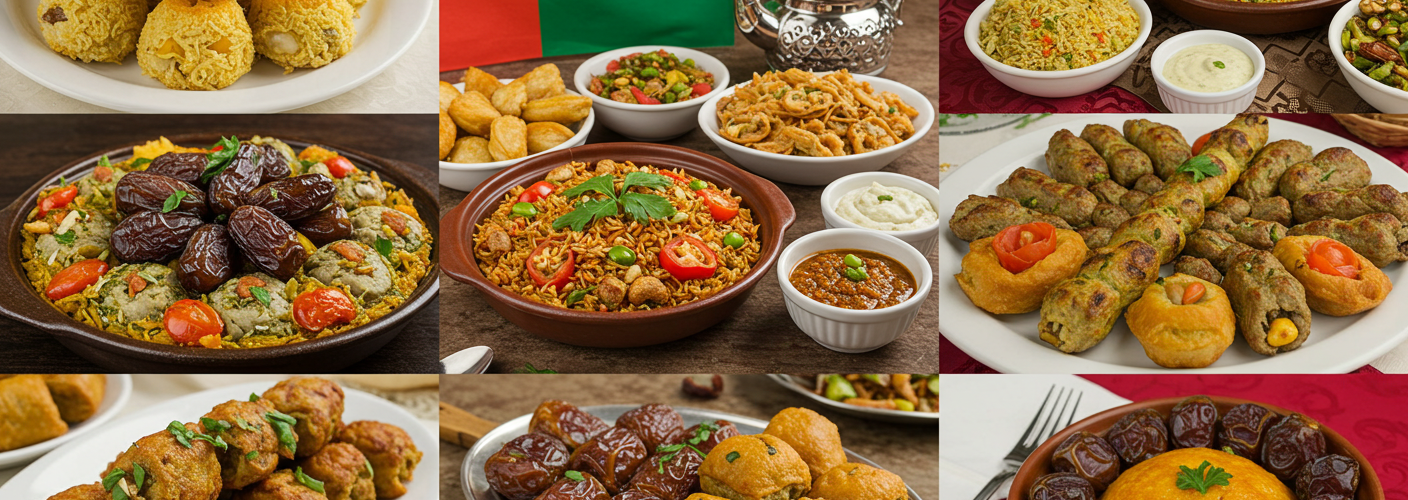The United Arab Emirates (UAE) is a melting pot of cultures, and its culinary scene reflects this rich diversity. With influences stemming from the indigenous Bedouin traditions, as well as Persian, Indian, and various other cuisines, the food of the UAE offers a unique palette of flavors, aromas, and textures that captivates both locals and visitors alike.
Traditional Dishes
At the heart of Emirati cuisine are traditional dishes that have been passed down through generations. One of the most iconic is Al Harees, a dish made with wheat and meat that is cooked over a low flame for several hours. The ingredients are mixed together until they achieve a smooth, porridge-like consistency, often served during festive occasions such as Ramadan and weddings.
Another staple is Majboos, a fragrant spiced rice dish that often features chicken, lamb, or fish. The rice is cooked with a blend of spices, including saffron, cardamom, and cinnamon, which impart a special flavor. This dish represents the family-oriented aspect of Emirati culture, as it is often shared among loved ones during gatherings.
Shawarma has also become internationally recognized, although its Middle Eastern roots have a significant presence in the UAE. The dish consists of marinated meat, typically chicken or lamb, that is slow-cooked on a vertical rotisserie and then sliced thinly. It is usually served in a wrap with garlic sauce, pickles, and vegetables, making it a popular street food choice.
Influential Ingredients
The ingredients commonly used in UAE cuisine highlight the region’s agricultural bounty and history of trade. Dates, for example, are a fundamental part of Emirati culture. Traditionally enjoyed with Arabic coffee as a welcome gesture, these sweet fruits are commonly found in desserts, salads, and snacks.
Another essential ingredient is bread, particularly Khubz, a round flatbread that accompanies many meals. This bread is often used to scoop up stews or as a wrap for meats and vegetables. The use of spices like cumin, coriander, and turmeric not only enhances the flavors but also pays homage to the UAE’s historical connections with trade routes, which facilitated the exchange of spices.
Dining Experiences
When it comes to dining experiences, the UAE doesn’t disappoint. While traditional eateries continue to thrive, modern fusion restaurants are emerging, combining local flavors with international cuisines. This blending results in innovative dishes that appeal to a diverse range of palates. Dining in the UAE often extends beyond just the food; it encompasses an atmosphere of hospitality, showcasing a commitment to making every meal an experience.
For those looking to savor authentic Emirati cuisine, visiting a Majlis, a traditional sitting area often used for social gatherings, provides a unique opportunity to enjoy home-cooked meals in a warm and welcoming environment.
Conclusion
The culinary landscape of the United Arab Emirates is as vibrant and diverse as the country itself. From its traditional dishes that tell stories of generations past to the innovative gastronomy that reflects its modernity, UAE food culture invites exploration and appreciation. Whether you are a resident or a traveler, indulging in Emirati cuisine is not just a meal; it is an experience that connects you to the heart of the UAE. So, the next time you have the chance, dive into this beautiful world of flavors and let the stories unfold on your plate.




Add comment